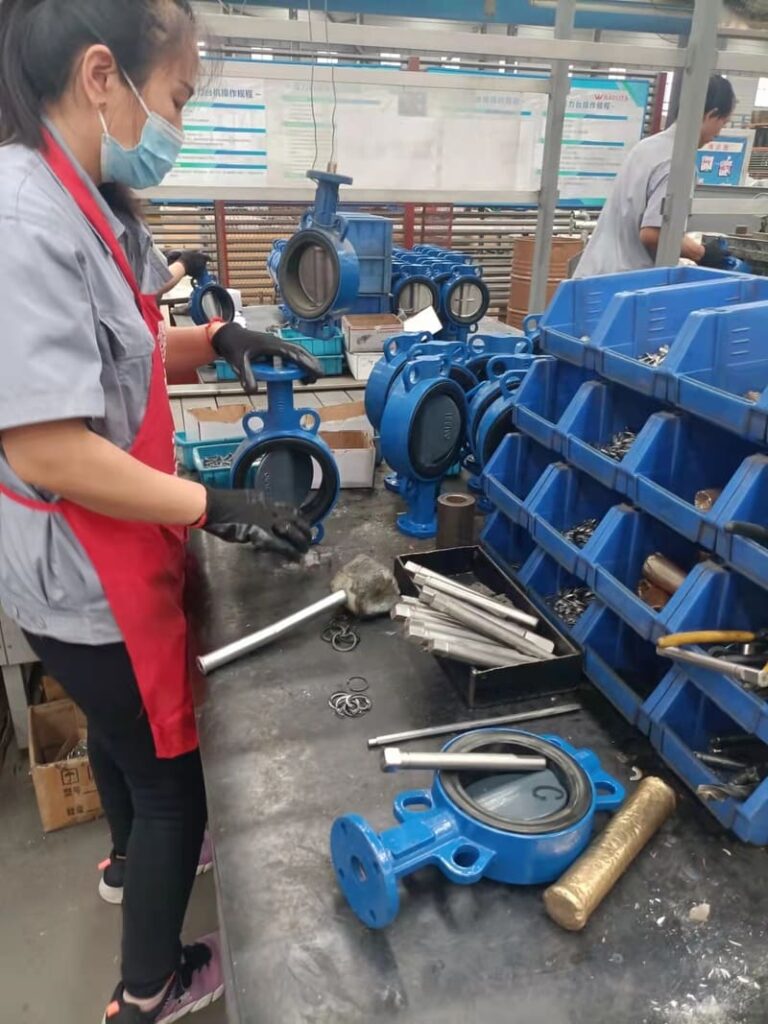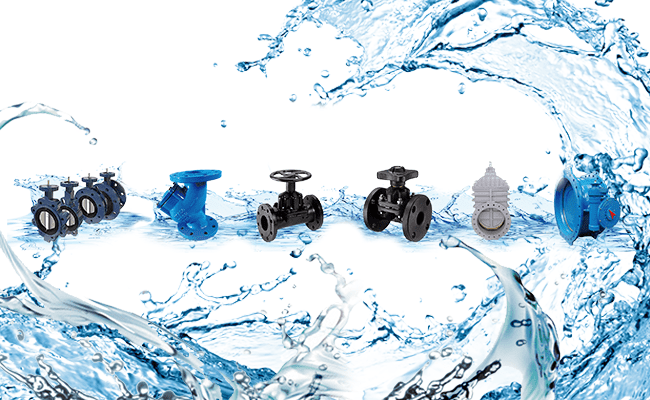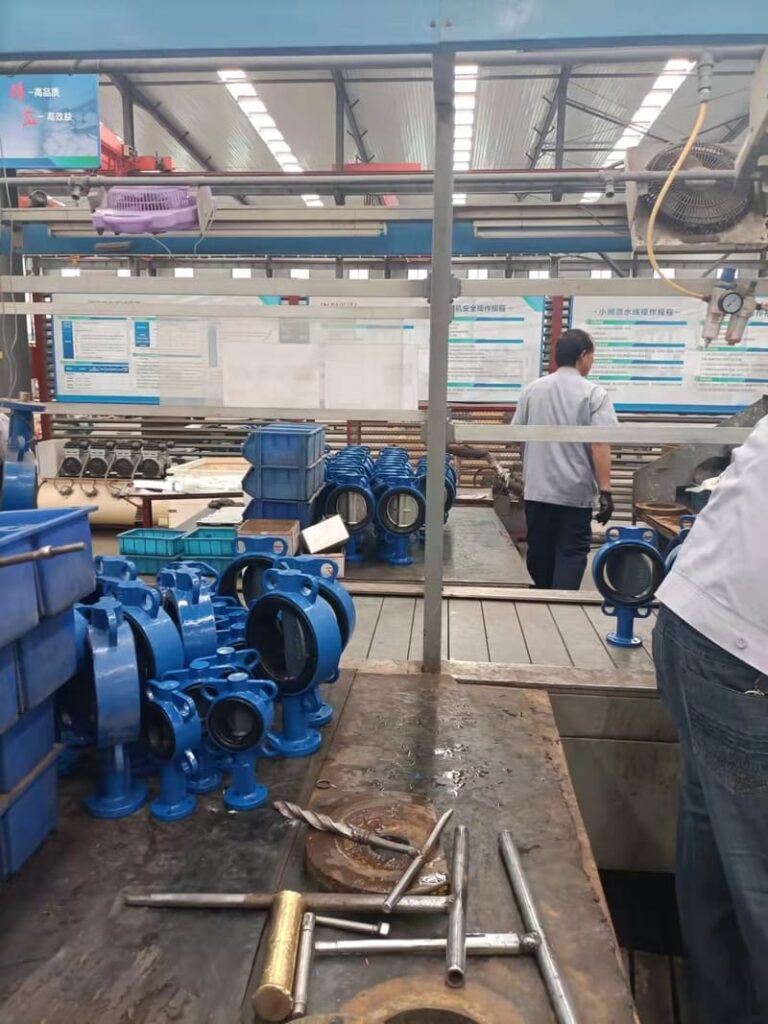
Let we talk about selecting material of stem and stem nut for industrial valves.
when selecting the valve stem material, it is necessary to ensure that the industrial valve stem has sufficient strength, good impact toughness, and corrosion resistance at the specified temperature. The industrial valve stem is fragile, so attention should be paid to the machining performance and heat treatment performance of the material when selecting it.
The industrial valve stem is not only a moving part and a stressed part, but also a sealing part during the opening and closing process of the valve. At the same time, the industrial valve stem is impacted and corroded by the medium, and friction with the packing is also generated. Therefore,
Industrial valve stems more use materials as follows:
- Copper alloy: Generally, the selected grades are QA19-2, HPb59-1-1. Suitable for low pressure valves with nominal pressure less than or equal to 1.6MPa and temperature less than or equal to 200°C.
- Carbon steel: Q275, 35 steel is generally selected, after nitriding treatment, it is suitable for ammonia valves with a nominal value less than or equal to 2.5MPa, and low and medium pressure valves for water, steam and other media. Q275 steel is suitable for valves whose temperature does not exceed 300℃; 35 steel is suitable for valves whose temperature does not exceed 450℃.
Note: It has proved that the use of carbon steel nitriding manufactured for the valve stem cannot solve the corrosion resistance problem well and should be avoided.
Alloy steel: 40Cr, 38CrMoAlA, 20CrMo1V1A and other materials are generally used. After 40Cr is chrome-plated, it is suitable for water, steam, petroleum and other media with nominal pressure less than or equal to 32MPa and temperature less than or equal to 450°C. 38CrMoAlA has undergone nitriding treatment and can withstand a pressure of 10MPa at a working temperature of 540°C. It is often used in power station valves. After nitriding treatment, 20CrMo1V1A can withstand a pressure of 14MPa at a working temperature of 570℃, and is often used in power station valves.
Stainless steel: generally use 2Cr13, 3Cr13, 1Cr17Ni2, 1Cr18Ni12Mo2Ti and other materials. 2Cr13, 3Cr13 stainless steel is suitable for water, steam and weakly corrosive media with nominal pressure less than or equal to 32MPa and temperature less than or equal to 450℃. The surface can be strengthened by methods such as chrome plating and high frequency quenching. 1Cr17Ni2 stainless acid-resistant steel is used on stainless steel valves and low-temperature valves with nominal pressure less than or equal to 6.4MPa and temperature -100℃~200℃. It can resist corrosive media. 1Cr18Ni9Ti, 1Cr18Ni12Mo2Ti stainless, acid-resistant steel is used in high-temperature valves with a nominal pressure of 6.4MPa or less and a temperature of 600°C or less. It can also be used in stainless steel valves and low-temperature valves with a temperature of -100°C or less. 1Cr18Ni9Ti can resist corrosive media such as nitric acid; 1Cr18Ni12Mo2Ti can resist corrosive media such as acetic acid; when 1Cr18Ni9Ti, 1Cr18Ni12Mo2Ti are used in high-temperature valves, nitriding treatment can be used to improve scratch resistance.
Shaft multiplied by chromium steel: GCr15 is selected, which is suitable for ultra-high pressure valves with nominal pressure less than or equal to 300MPa and temperature less than or equal to 300°C.
There are many materials used to be industrial valve stems, including 4Cr10Si2Mo martensitic heat-resistant steel, 4Cr14Ni14W2Mo austenitic steel and so on.
The industrial valve stem nut and the valve stem are threaded to directly bear the axial force of the industrial valve stem and are in friction with the valve parts such as the bracket. Therefore, in addition to a certain strength, the valve stem nut also requires the properties of low friction coefficient, no corrosion, and no seizure with the valve stem.
The stem nut is often selected from the following materials:
Plastic: The plastics used to make stem nuts are nylon 66 and nylon 1010, which have the advantages of corrosion resistance, low friction coefficient, good processability and low cost. But because its strength is lower than that of metal, it is only used for low-pressure, small-bore valves.
Copper alloy: Copper alloy does not rust, has a small friction coefficient, and has a certain strength and toughness. It is currently a commonly used material for valve stem nuts. Low pressure valves with nominal pressure less than or equal to 1.6MPa often use ZCuZn38Mn2Pb2 cast brass; valves with nominal pressure less than or equal to 6.4MPa often use ZCuAl10Fe3 Wuxi bronze; high pressure valves with nominal pressure greater than 6.4MPa often use ZCuZn25Al6Fe3Mn3 cast brass.
Steel: When the valve stem nut of the electric valve needs high hardness and the ammonia medium corrodes the copper, steel is used instead of copper. Under the condition of not causing the valve stem to seize, the valve stem nuts are often made of 35, 40 high-quality carbon steel and 1Cr13, 1Cr18Ni9, Cr17Ni2 and other stainless steels. In the selection, the general rule that the hardness of the valve stem nut is lower than the valve stem hardness should be observed to avoid premature wear and seizure.
The above are the manufacturing materials and requirements of the valve stem and valve stem nut.
SATBEL VALVES focus on industrial valves, such as Diaphragm valve, butterfly valve, foot valve, air valve, gate valve, strainer.


